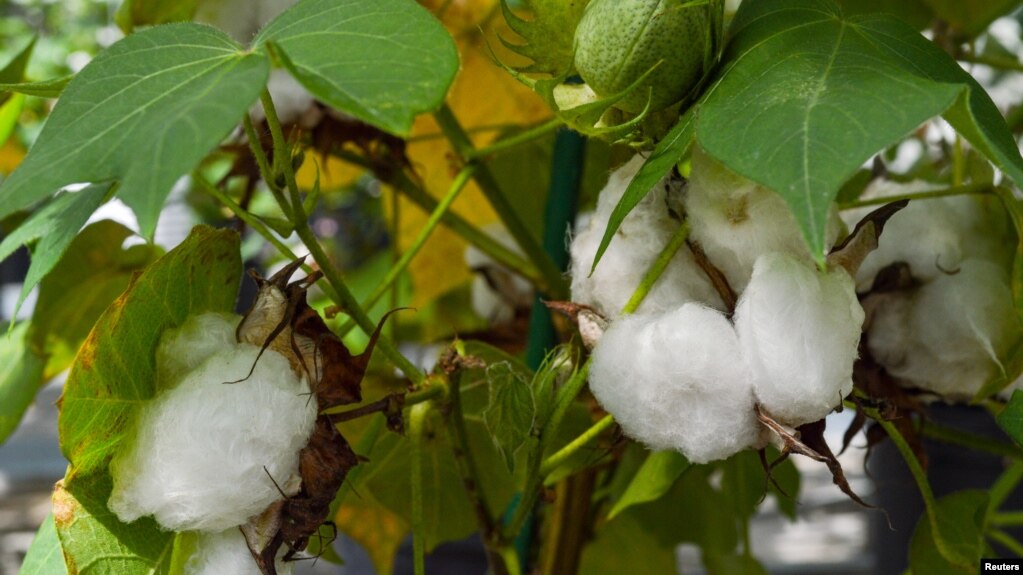
An experimental cotton plant is shown at a Texas A&M research facility in this handout image provided by the Texas A&M University College of Agriculture and Life Sciences in College Station, Texas, U.S., on October 17, 2018.
The United States government has given its permission for people to consume genetically modified cotton.
The Reuters news agency says the government’s approval could lead to a new food product: a kind of cottonseed, filled with protein.
The genetically engineered cotton plant is the idea of scientists at Texas A&M University in College Station, Texas. They believe their product could help people around the world.
The U.S. Food and Drug Administration (FDA) announced the approval on October 11. The ruling means that the cottonseed could be made available as food for people and all kinds of animals.
Keerti Rathore is a plant biotechnologist with Texas A&M AgriLife Research. He said he and other scientists are holding discussions with companies. They hope to have the plant available for purchase within about five years.
Rathore said the team will consider asking for government approval in other countries, starting with Mexico.
“Yes, we are fully aware of the resistance to GMOs in many countries, but I remain hopeful that counties who are desperate for food will (use) this technology,” he said.
Cotton is grown in more than 80 countries. Fiber from the plant is used to make cloth. Cottonseed is used to feed animals such as cattle and sheep that have more than one stomach chamber.
Normal cottonseed can be harmful to humans and many animals because it contains high levels of gossypol, a poisonous chemical.
Rathore’s team used a technology called RNA interference to “silence” a gene, largely removing the chemical from the cottonseed. Gossypol was left at natural levels in the rest of the plant because it guards against insects and disease.
“With…this technology, cotton becomes a (two)-purpose crop. It requires no additional effort on the part of farmers or inputs or land for cultivation. So, it will make cotton farming more sustainable,” Rathore said.
The genetic engineering does not affect the plant’s fiber for use in cloth.
The U.S. Agriculture Department lifted a ban on production of the modified cotton plant last year before the FDA decision.
“Cottonseed can be consumed in many ways…the leftover meal with its high protein content can be used … in tortilla, bread and baked goods. The seed kernels can be roasted and eaten as a snack,” Rathore said.
Many of the world’s cotton-producing countries, particularly in Asia and Africa, have populations that face malnutrition. Rathore said that could change with the new cottonseed.
I’m Susan Shand.
The Reuters News Agency reported this story. Susan Shand adapted it for VOA Learning English. George Grow was the editor.
Write to us in the Comments Section or on our Facebook page.
________________________________________________________________
Words in This Story
consume – v. eating or drinking something
desperate – adj. having lost hope
fiber – n. plant material that cannot be digested but that helps you to break down other food
chamber – n. a small space inside something
cultivate – v. to prepare and use (soil) for growing plants
sustainable – adj. supportable or defendable
kernel – n. a whole seed
malnutrition – n. lack of nutrition
Comprehension Quiz
What is used to make cloth?